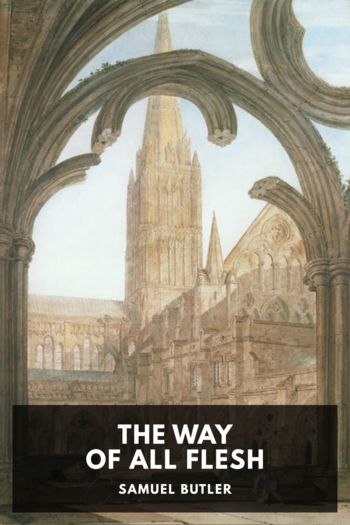Erewhon Samuel Butler (online e book reader .txt) 📖

- Author: Samuel Butler
Book online «Erewhon Samuel Butler (online e book reader .txt) 📖». Author Samuel Butler
At last the evil reached such a pitch that the people rose, and with indiscriminate fury destroyed good and bad alike. Most of what was destroyed was bad, but some few works were good, and the sculptors of today wring their hands over some of the fragments that have been preserved in museums up and down the country. For a couple of hundred years or so, not a statue was made from one end of the kingdom to the other, but the instinct for having stuffed men and women was so strong, that people at length again began to try to make them. Not knowing how to make them, and having no academics to mislead them, the earliest sculptors of this period thought things out for themselves, and again produced works that were full of interest, so that in three or four generations they reached a perfection hardly if at all inferior to that of several hundred years earlier.
On this the same evils recurred. Sculptors obtained high prices—the art became a trade—schools arose which professed to sell the holy spirit of art for money; pupils flocked from far and near to buy it, in the hopes of selling it later on, and were struck purblind as a punishment for the sin of those who sent them. Before long a second iconoclastic fury would infallibly have followed, but for the prescience of a statesman who succeeded in passing an Act to the effect that no statue of any public man or woman should be allowed to remain unbroken for more than fifty years, unless at the end of that time a jury of twenty-four men taken at random from the street pronounced in favour of its being allowed a second fifty years of life. Every fifty years this reconsideration was to be repeated, and unless there was a majority of eighteen in favour of the retention of the statue, it was to be destroyed.
Perhaps a simpler plan would have been to forbid the erection of a statue to any public man or woman till he or she had been dead at least one hundred years, and even then to insist on reconsideration of the claims of the deceased and the merit of the statue every fifty years—but the working of the Act brought about results that on the whole were satisfactory. For in the first place, many public statues that would have been voted under the old system, were not ordered, when it was known that they would be almost certainly broken up after fifty years, and in the second, public sculptors knowing their work to be so ephemeral, scamped it to an extent that made it offensive even to the most uncultured eye. Hence before long subscribers took to paying the sculptor for the statue of their dead statesmen, on condition that he did not make it. The tribute of respect was thus paid to the deceased, the public sculptors were not mulcted, and the rest of the public suffered no inconvenience.
I was told, however, that an abuse of this custom is growing up, inasmuch as the competition for the commission not to make a statue is so keen, that sculptors have been known to return a considerable part of the purchase money to the subscribers, by an arrangement made with them beforehand. Such transactions, however, are always clandestine. A small inscription is let into the pavement, where the public statue would have stood, which informs the reader that such a statue has been ordered for the person, whoever he or she may be, but that as yet the sculptor has not been able to complete it. There has been no Act to repress statues that are intended for private consumption, but as I have said, the custom is falling into desuetude.
Returning to Erewhonian customs in connection with death, there is one which I can hardly pass over. When anyone dies, the friends of the family write no letters of condolence, neither do they attend the scattering, nor wear mourning, but they send little boxes filled with artificial tears, and with the name of the sender painted neatly upon the outside of the lid. The tears vary in number from two to fifteen or sixteen, according to degree of intimacy or relationship; and people sometimes find it a nice point of etiquette to know the exact number which they ought to send. Strange as it may appear, this attention is highly valued, and its omission by those from whom it might be expected is keenly felt. These tears were formerly stuck with adhesive plaster to the cheeks of the bereaved, and were worn in public for a few months after the death of a relative; they were then banished to the hat or bonnet, and are now no longer worn.
The birth of a child is looked upon as a





Comments (0)